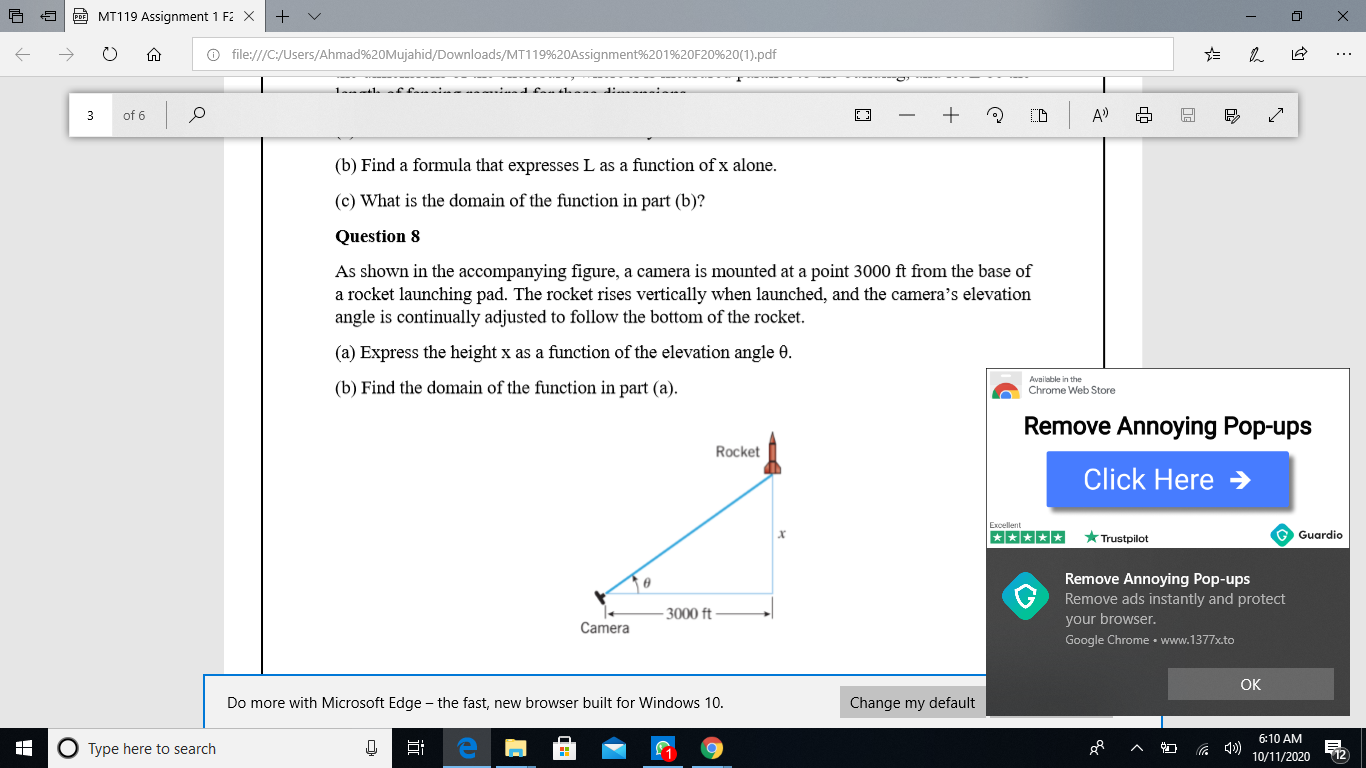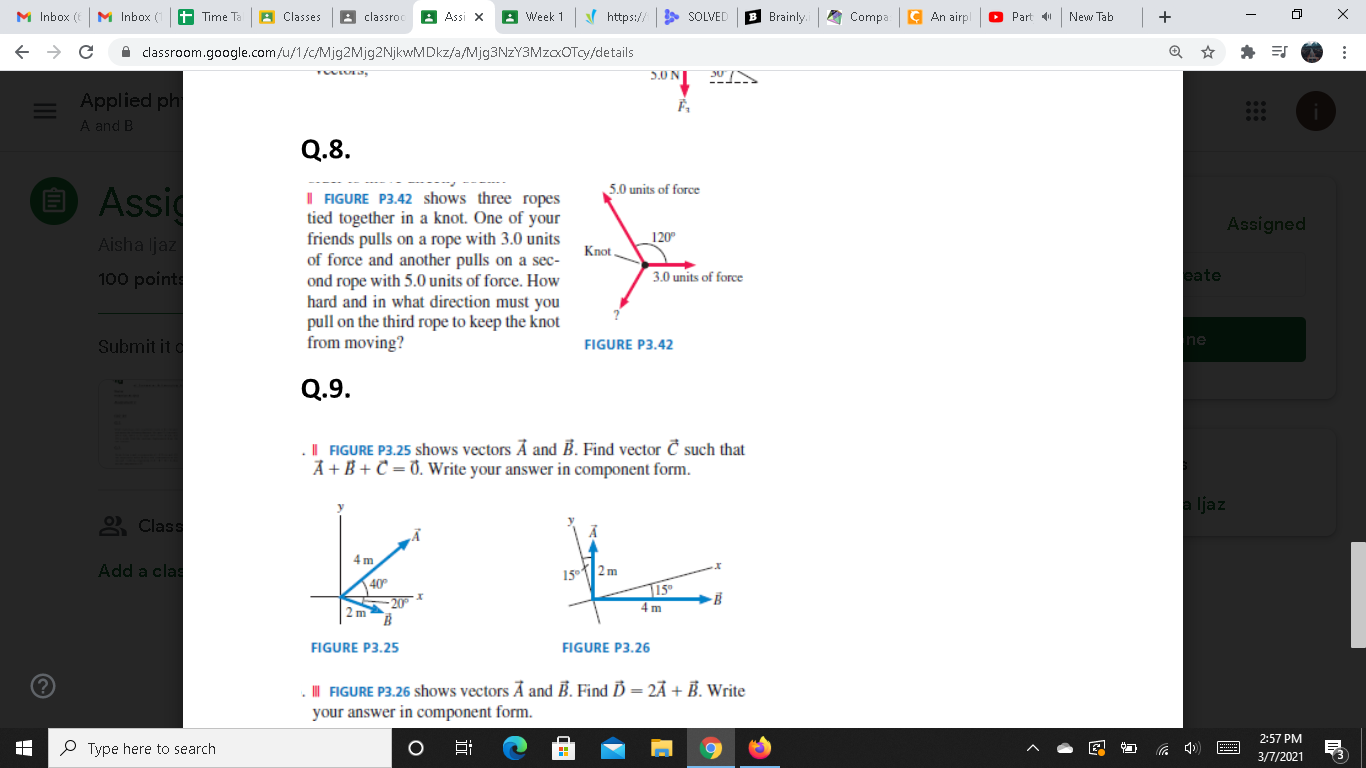An airplane starting from airport A flies 300 km east, then 350 km at 30.0° west of north, and then 150 km north to arrive finally at airport B. (a) The next day, another plane flies directly from A to B in a straight line. In what direction should the pilot travel in this direct flight? (b) How far will the pilot travel in this direct flight? Assume there is no wind during these flights.
Hey there! @Ahmad234
Let's draw out the situation they gave us We have airport A and a plane leaves it and flies 300 km east then 350 km at 30.0° west of north and then 150 km north and reaches airport B
So on a compass, east is to the right- so our first vector would look like this |dw:1615109007647:dw|
Now we're going 350 km at 30° west from north This one sounds a little tricky, how do you form the angle 30? But remember north is pointing upwards and so we're traveling 30 degrees west from that so it'll be 30 degrees to the left like this |dw:1615109118545:dw|
and then the third leg of the journey was 150 km north so |dw:1615109316028:dw|
so to answer the first part of your question, which direction will the pilot need to go if he wants to go from A to B in a straight line? (remember, A was at the origin)
for the second part, we need to find the length of the resultant vector let's call A = 300 km east B = 350 km at 30.0° west of north C = 150 km north so the resultant vector would be A + B + C but to first add them up, let's write the vectors in their component forms i.e. breaking it into the x and y components I see that you're now finally replying so I'll wait until we finish the first part :)
Bx=-350COS(30) By=350SIN(30) that is right
because lie in 2 Quadrant
sin and cos should be switched
I can't understand
|dw:1615110599828:dw|
the x-component would be -350 SIN (30) and for the y-component it would be cos does that make sense?
thanks
1 more numerical, can you solve it
similarly, A only has an x-component and C only has a y-component We have to add Ax + Bx + Cx (Cx is just 0) and we have to add Ay + By + Cy (Ay is just 0)
\(\color{#0cbb34}{\text{Originally Posted by}}\) @Ahmad234 1 more numerical, can you solve it \(\color{#0cbb34}{\text{End of Quote}}\) which numerical?
do you mean converting from x and y components to find the magnitude?
can you send me whatsapp number for physic information
Are you asking a new question? question 8?
\(\color{#0cbb34}{\text{Originally Posted by}}\) @AZ Are you asking a new question? question 8? \(\color{#0cbb34}{\text{End of Quote}}\) it might be question 8
1 min wait
\(\color{#0cbb34}{\text{Originally Posted by}}\) @AZ similarly, A only has an x-component and C only has a y-component We have to add Ax + Bx + Cx (Cx is just 0) and we have to add Ay + By + Cy (Ay is just 0) \(\color{#0cbb34}{\text{End of Quote}}\) great job like always - congrats !
Ask it in a new question
screenshot can't not upload in new question
You can type "Physics Question" and create it and then post the screenshot as a reply
Join our real-time social learning platform and learn together with your friends!


